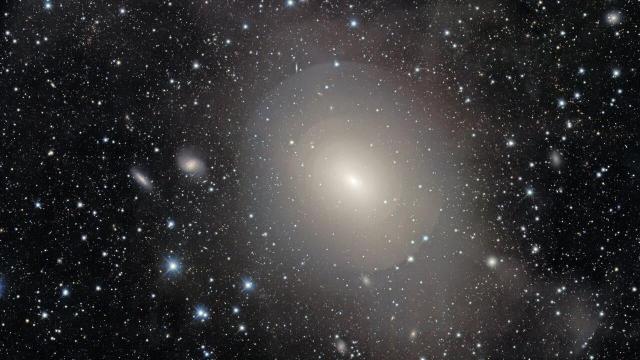Behold a galactic onion: the shell galaxy NGC 3923, spotted by the Cerro Tololo Inter-American Observatory’s Dark Energy Camera (DECam) at a distance of about 70 million light-years from Earth.
Shell galaxies make up approximately 10% of all elliptical galaxies, one of the three main galaxy types. The other two types are spiral galaxies, like our Milky Way, and irregular galaxies. Shell galaxies have layered rings, or concentric layers, within their galactic haloes. NGC 3923’s structure likely emerged from a galactic merger, in which the larger galaxy peeled stars away from the smaller galaxy’s disk. Those stars then got mixed into the larger galaxy’s halo, forming the shells.
NGC 3923 has over twenty shells, according to NASA, though only a few are visible in the DECam image. Research published in Astronomy & Astrophysics in 2016 found that the galaxy may have as many as 42 shells.
NOIRLab, which operates the camera, noted in the release that NGC 3923 is about 50% larger than the Milky Way, and its shells are the largest of all known shell galaxies.
The shells aren’t the only feature of the 250-megapixel image. Towards the top of the image is a large gravitational lens around the galaxy cluster PLCK G287.0+32.9. Gravitational lenses are massive objects or collections of objects in space with gravitational fields so strong that they bend light passing by them from more distant sources, allowing the light from those distant objects to be magnified.

Astronomers use gravitational lenses to spot some of the universe’s most ancient light; last year, a team of astronomers spotted the oldest-known star—about 12.9 billion years old—in the arc of a gravitational lens. Strong gravitational lenses can bend light in arcs, but also in mesmerizing Einstein Rings, which literally appear to be floating rings of light in space. Earlier this year, signatures in Einstein rings boosted the case for axions, a minuscule theorized particle, as a candidate for dark matter, the unknown stuff that makes up about 27% of our universe.
The full-sized image is too large to host on this size, but you can check it out—and zoom in on its myriad pinpricks of light—here. You can see NGC 3923’s shells in greater detail, but also be struck by the massiveness of the cosmos.
